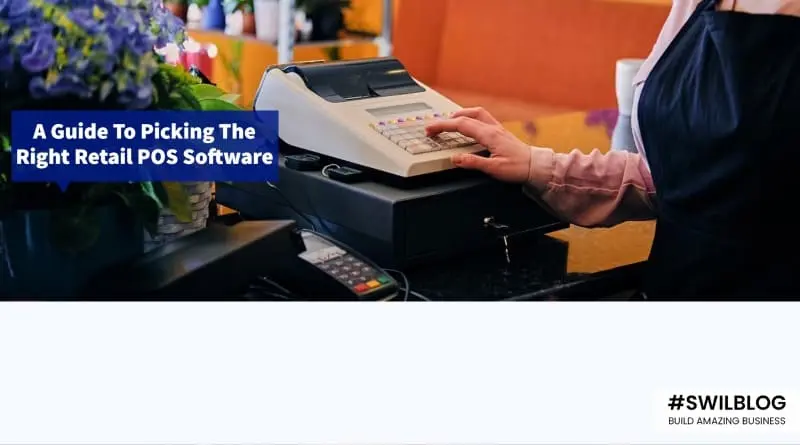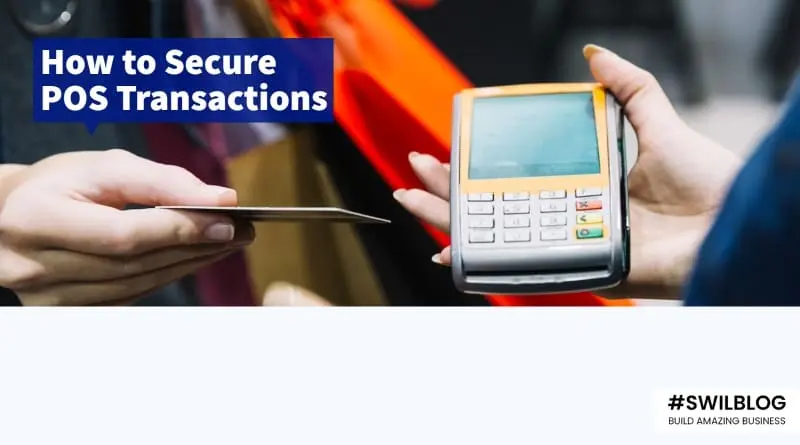POS systems were once the domain of cashiers and checkout operators. They are now being used more often from the managers’ desks, allowing them to juggle multiple tasks at once.
POS systems are being changed with new versions that allow different transactions, navigation, and tabulating to take place. With this change came the concept of “generic POS”. This is where a product is viewed as one entity regardless of the features and functions it has.
In the posts of a 2020s retail owner, the use of artificial intelligence and other technology aids in streamlining operations and making decisions from behind the scenes. Of the many work processes handled by a POS system, the point-of-sale function is probably most often performed manually.
Cloud POS systems and traditional POS systems have different functions, with some of them being more useful for customers/end users and some for vendors/employees. We will highlight their key differences with a direct comparison using data from leading vendors.
Businesses of all types need POS systems. If you have established a business, you can depend on one that is reliable, simple, and durable. Standard POS devices are also not the best choices. Almost all are antiquated models based on outdated technology and prone to malfunctions when used in tough situations.
Take a look, you will enjoy the comparisons and when you are done, please let me know what might make the difference for your business.
Article Content-
- What is Cloud-Based POS?
- Advantages of Cloud-Based POS
- What is Traditional POS?
- Advantages of Traditional POS
- Comparison of Cloud-Based POS Vs Traditional POS
- SWIL POS System Benefits
- Conclusion
What is Cloud-Based POS?
A cloud-based point of sale system is a type of software that allows businesses to manage their sales transactions and track inventory using a remote server. This article will make you think about the technology behind this system and its benefits.
In this age of tech-savvy consumers, cloud POS systems are easy to use and connect to an extensive range of software applications. They require little setup and can be accessed by any internet device.
Vendors who offer cloud POS systems also have the capability to enhance their products, store data more efficiently, and introduce new features. The data forms are usually blacklisted by the server in order to ensure that they are not accessed and deleted accidentally.
If a work of art is produced, its highest form will be appreciated when it’s put up in a public place. You can access your store’s data from anywhere, 24/7, and allow your staff to work together – see, comment, and edit all as you do at home.
Advantages of Cloud-Based POS
Cloud-based POS system has many advantages over a traditional POS system.
- The main advantage is that it can be accessed from any computer or mobile device with an internet connection. This means that you can take your business anywhere you go.
- This can also be done from mobile devices and can track sales over time while you’re in another part of the country. This data is all encrypted so that your information is safe from hackers.
- An added benefit of a Cloud POS system is that it can be rapidly expanded and managed from the cloud. Traditional systems are designed for a specific number of units, whereas Cloud POS systems can be designed for any markup size or even multiple outlets.
- With a Cloud POS system, you can download and install apps, they are available for free on your smartphone or tablet. You can also use voice recognition software to set up the device, so customers can simply say what they want to order.
- Using a cloud-based POS system, you can take the investment out of your business. You can have the most advanced payment processing equipment available until it doesn’t do what you need it to or is buggy.
What is Traditional POS?
Also known as an on-premise POS system is a computer system used by retail businesses to manage transactions. On-premise POS systems are installed and operated by the business itself, as opposed to cloud-based POS systems, which are managed and capabilities and then made available to customers. They will be very different from the cloud-based ones
On-premise systems also store more information than cloud-based systems. Cloud is a huge asset in this age of data storage, but it can be expensive too. Each entity has to pay extra for storing its details on the cloud server and worrying about sudden outages can be a major issue. The on-premise systems can scale up quickly which allows businesses to keep
On-site virtual private servers are often cloud-based but offer the advantage of increased security and greater uptime. Cloud-based systems can be sold “as is” and charge you for no additional services beyond your subscription fees. If on sites like AWS, you rely on third-party software/services then it becomes an expendable commodity, they will cut costs by taking
It is important to note that cloud-based systems do support UI/UX design, but it varies from company to company and its functionality.
By cutting costs and making it easier to use cloud-based systems, POS terminals can be quickly switched around and are typically locked up, giving executives an easier way to manage inventory, on a daily basis.
Advantages of Traditional POS
The following features have highlighted a few advantages of the Traditional POS system.
- Traditional POS is more reliable and secure than Cloud POS.
- Traditional POS offers better customer support than Cloud POS.
- Traditional POS is less expensive to operate and maintain than Cloud POS.
- Traditional POS is more customizable than Cloud POS.
- Traditional POS is more efficient and scalable than Cloud POS.
Comparison of Cloud-Based POS Vs Traditional POS
Cloud POS is a well-proven form of digital invoicing system. One of the major benefits of using a Cloud POS system is that it allows customers to view flexible accounting reports and utilize other features such as live chat, self-serve kiosks, transfer funnel integration, etc. These features are not available with traditional POS systems.
1. Price
Traditional POS: Hardware, software, and payment processing services often offer much the same thing. They can be customized to fit your company’s needs. The best part is that they typically are not billed up-front and you pay only when you actually use the equipment or software purchased.
Cloud-Based POS: The software updates are included as part of your monthly subscription fee. Therefore, updating the software on your own is no longer an issue when you pay for a monthly subscription.
2. Maintenance
Traditional POS: This is what a good maintenance support team does for you. Remotely, they find solutions to your problems so that you can focus on other things without having to worry about work interruptions.
Cloud-Based POS: Maintenance is done online with automatic upgrades to the software. Real-time updates ensure that your system is compliant with many industry standards and security. They offer a level of security & compliance not found in anything else.
The downside is if you experience an internet outage, you might miss or interrupt updates and need to speak to your pro.
3. Data Storage
Don’t fall into the debate between location-based and cloud-based storage. Integrate your data to be safe, secure, and cloud-based.
Traditional POS: stores data on a local server and runs an open network, making it easily hackable. Security protocols don’t match the standards used by most software companies for more secure networks (e.g., Infosec), thereby exposing users to the risk of data breach and viruses lurking in what may have been encrypted information.
There is a way to copy the machine on your hard drive, paste it into Windows, and backup your data in no times.
Cloud-Based POS: You are responsible for applying a patch on your OS in real-time. You can go offline when you want to and it still syncs your data if something happens on your physical systems. Your data isn’t even affected.
SWIL POS System Benefits
- SWIL POS System helps restaurants to manage their orders and increase profits. It has a number of features that make it a great choice for any restaurant.
- Improve customer satisfaction with the help of an order management system.
- Increase revenue by providing more accurate order tracking, better inventory management, and improved customer service.
- Reduce labor costs by automating tasks such as order taking, menu planning, inventory management, and cash handling.
- SWIL POS System helps business owners in the restaurant industry with their marketing. It is designed to help them with their marketing, customer service, and accounting.
- It helps them with things like scheduling employees, managing orders, and managing inventory. It also provides a way for customers to order food online and pay for it without having to walk into the restaurant.
- The SWIL POS System is a cashier-less, self-service system that uses facial recognition, artificial intelligence, and biometric authentication to process payments. It helps retailers increase their sales by up to 39% by providing a faster and more efficient checkout experience.
Conclusion
So, which is the right choice for your business – cloud-based POS Vs traditional POS? The answer to that question depends on your specific needs and what you’re looking for in a POS system.
To help you choose the right system and make your decision: Cloud POS is the best option for you as it provides the power of access from any device.
Hope this blog on “Cloud-Based POS Vs Traditional POS: Which is best for your business?” addressed your information needs. Before you buy any type of POS system, do your research so that you can ensure your business is using a product with the best possible quality of service and support.







